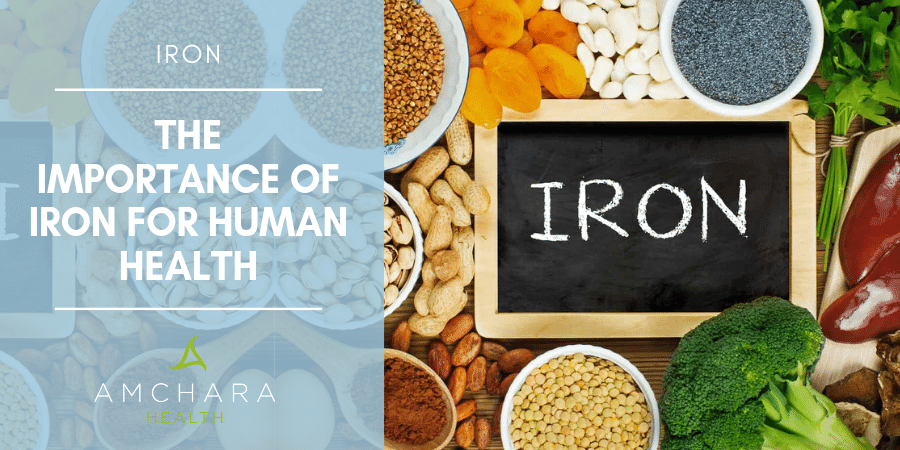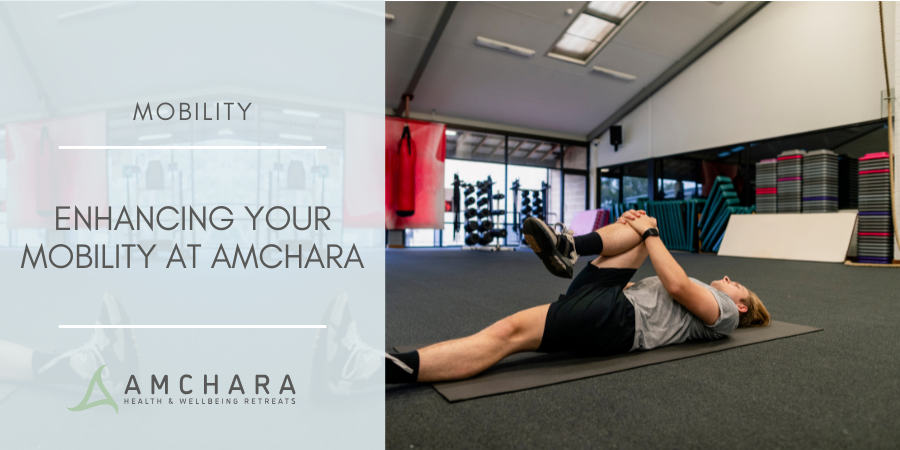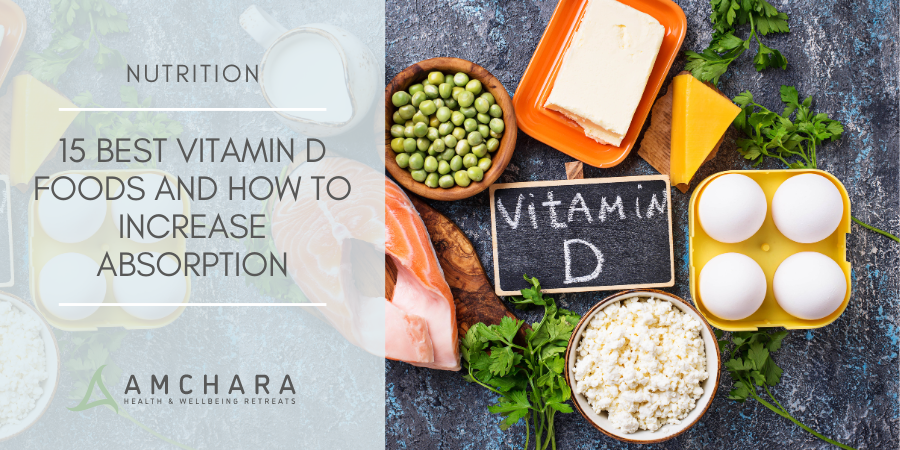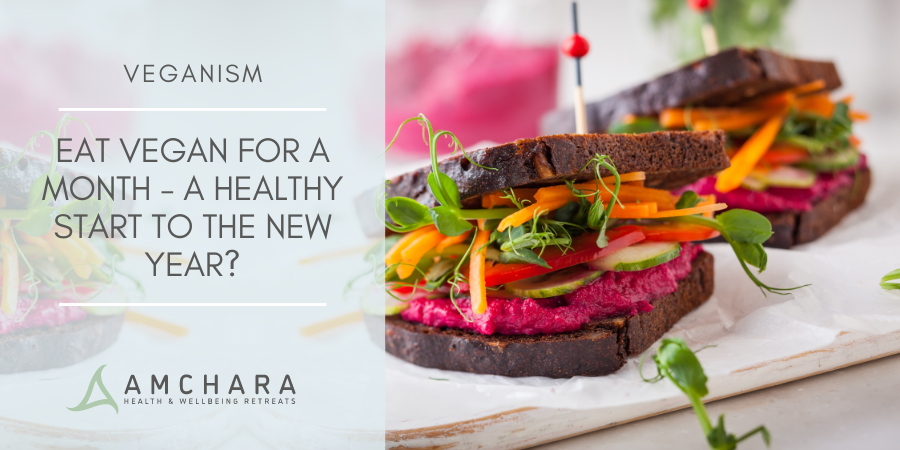Every single cell that lives in plants and animals contains iron.
In this article we take a look at why this particular mineral is so important for human health and how a deficiency could affect you.
We always aim to provide you with insightful information and evidence-based content, with actionable knowledge and tips to help you on your journey to optimal health.
Table of Contents:
- The Importance of Iron
- How Much Iron Do You Need?
- Iron Deficiency
- Iron Deficiency Anaemia
- The Signs and Symptoms of Anaemia
- Iron Blockers
- How To Increase Iron Absorption
- The Risks Associated With Too Much Iron
- Food Sources of Iron
The Importance of Iron
Iron is a mineral that is critical to human life.
The majority of the iron found in the human body is found in one of two proteins, known as myoglobin in the muscle cells and haemoglobin in the red blood cells.
Iron’s central role is within the haemoglobin molecule, which is the red pigment in your blood.
Haemoglobin is responsible for transporting oxygen from your lungs to the rest of your body and for carrying carbon dioxide from the tissues to the lungs.
All cells within the body need oxygen to be able to produce energy, so it is vital in supporting life.
The iron found in haemoglobin has a very important role – it contains chemicals that tell it when to release oxygen as well as how much to release, ensuring all the cells in the body obtain what they need.
Haemoglobin, with its iron content, is also responsible for eliminating hydrogen atoms and carbon that are released by the body when it uses carbohydrates.
This is why it is important to have enough iron in the body if you take part in high levels of exercise, because as your body creates more carbon dioxide (CO2), the iron in the haemoglobin eliminates the CO2 and brings fresh new oxygen to the muscles.
Iron also has numerous other functions.
It is essential for:
- Regulation of cell growth and differentiation
- Hormone control
- Amino acid synthesis
- Formation of neurotransmitters
- Enzymes that are involved in energy production and metabolism
- Enzymes that rid the body of toxins
- DNA synthesis
After iron has been absorbed from food in your intestines, it is transported to the body’s tissues by a protein called transferrin.
Transferrin is a protein found inside cells that stores iron so that your body can use it later.
The body contains between 3mg and 4mg of iron, of which 60-70% is circulating iron and the rest is stored in the bone marrow, spleen and liver.
The amount of ferritin in your blood (your serum ferritin level – ferritin is a blood cell protein containing iron) is directly related to the amount of iron stored in the body.
The best way to determine your own iron stores is by laboratory testing of your serum ferritin levels.
How Much Iron Do You Need?
Our need for iron varies throughout life. Children’s iron requirements are high, as iron is essential for strong muscles and production of blood.
Iron requirements are greater in women of childbearing age and during pregnancy than post–menopausal women.
Men typically need less iron than women and deficiencies in men are uncommon.
The RDA for iron is 10mg for males and 15mg for females. In the UK the RNI for adult males is 8.7mg and for adult menstruating women 14.8 mg. Over the age of 50 it is 8.7mg.
Iron Deficiency
Iron deficiency is the most common nutrient deficiency in the UK.
The groups at highest risk for iron deficiency are infants under two years of age, teenage girls, women of childbearing age, the elderly and pregnant women.
Iron deficiency can occur for a number of reasons including:
- Inadequate dietary intake
- Increased iron requirement (e.g. during growth spurts or pregnancy)
- Diminished iron absorption or utilisation
Blood loss is the most common cause of iron deficiency in adolescents and adult women under the age of fifty.
This is usually the result of excessive menstrual bleeding, but strangely it can also be iron deficiency that causes excessive menstrual blood loss.
Excessive blood loss can also be due to haemorrhoids, endometriosis, fibroids, bleeding from peptic ulcers, stomach cancer, bowel cancer and taking nonsteroidal anti-inflammatory drugs (NSAIDS). (6)
The elderly are high-risk candidates for iron deficiency, often because of inadequate dietary intake, but also because of low stomach acid production, which is common in old age and leads to decreased absorption of many nutrients including iron.
The importance of iron in the body becomes clear when you see the impact of a deficiency on an individual’s health.
The negative effects of iron deficiency are due largely to insufficient delivery of oxygen to the tissues and the impaired activity of iron containing enzymes in various tissues.
The most commonly known problem caused by iron deficiency is anaemia, however anaemia is the last stage of iron deficiency.
Iron dependent enzymes involved in metabolism and energy production are the first to be affected by low iron levels.
Iron deficiency also causes several other health problems:
- Excessive menstrual loss
- Learning disabilities
- Impaired immune function
- Decreased energy levels
- Decreased capacity for physical activity
Iron Deficiency Anaemia
Iron Deficiency Anaemia (IDA) is a global health problem. (2)
It involves populations of all age groups and sex. In the UK, IDA affects around 4.7 million people every year. (5)
If the body is low in iron, fatigue, irritability and headaches may occur as a result of the limited supply of oxygen delivered to the cells.
If the deficiency is severe, it can result in anaemia. Anaemia is caused by too few red blood cells or insufficient haemoglobin in the blood.
The Signs and Symptoms of Anaemia Include:
- Severe weight loss
- Extreme fatigue
- Listlessness
- Faintness
- Shortness of breath
- Pale complexion
- Abnormally smooth tongue
- Painful ulcers at the corners of the mouth
- Spoon shaped nails
- Vision problems
- Hair loss
- Dry flaking nails
- Sickness
- Dizziness
- Delayed movement in infants
- Premature and small babies
If iron deficiency anaemia is left untreated, it can affect your body’s natural defence systems (the immune system), which can make you more susceptible to illness and infection. (6)
Iron Blockers
The absorption of iron can be affected by a number of factors.
Chemical compounds called tannins can have adverse effects on iron availability.
Tannins are naturally occurring organic substances known as polyphenols, which are present in everyday foods such as tea, coffee, berries, nuts, smoked foods, legumes and some herbs and spices.
Plant phytates also have adverse effects on the bioavailability of iron. Phytates are substances found in fibrous foods such as bran, grains and wheat, which bind to iron and reduce its absorption.
How To Increase Iron Absorption
Consuming foods that are rich in vitamin C alongside iron-rich foods can enhance iron absorption.
Good vitamin C food sources include potatoes, Brussel sprouts, peppers, strawberries, mango and kiwi fruits.
Avoid drinking tea or coffee with meals, especially if you are vegetarian or vegan and look to obtain some iron from plant sources.
The Risks Associated With Too Much Iron
It is always advisable to visit your GP for advice before taking iron supplements because iron can be toxic to cells when present in high concentrations. (3)
Iron overload can be particularly damaging to the liver, heart and endocrine organs. (5)
This is because excess iron promotes the formation of damaging oxidative radicals, which may lead to tissue damage. (3)
Side effects of taking too much supplemental iron include:
- Nausea
- Vomiting
- Stomach pain
- Constipation
Food Sources of Iron
Humans with normal iron metabolism have a natural regulatory mechanism that will ensure sufficient amounts of iron are absorbed, provided adequate amounts are consumed via food consumption. (7)
Inadequate dietary intake of iron is common in many parts of the world, particularly amongst those who consume vegan or vegetarian diets.
There are two food sources of iron, heme iron and non-heme iron.
- Heme iron is iron that is bound to haemoglobin and myoglobin. It is found in animal products and is the most easily absorbable form (15% to 35%) and contributes 10% or more of our total absorbed iron. (4)
- Non-heme iron is found in plant foods. Compared to heme iron, it is less well absorbed.
Animal sources of iron include: offal, red meat, chicken, turkey, sardines, cockles, clams, mussels, prawns.
Plant sources of iron include: beans, pulses, lentils, nuts, seeds, quinoa, dried fruit, green leafy vegetables, tofu, chickpeas.
Take Home Message
Make sure you combine vitamin C with your meals to enhance the uptake of iron.
If you are showing signs or symptoms of iron deficiency always check with your GP first so that they can monitor your iron levels.
Feeling tired all the time isn’t always due to low iron levels; there may be other factors impacting your energy levels.
A Personalised Health Practitioner can help you to identify whether your diet or lifestyle are affecting your general wellbeing and make a personalised plan, tailored to your individual needs, to optimise your health.
Why not take advantage of a complimentary consultation with an Amchara Health Practitioner, just click on the following link amchara360.com
Did you find this article useful?
Let us know.
READ THIS NEXT:





